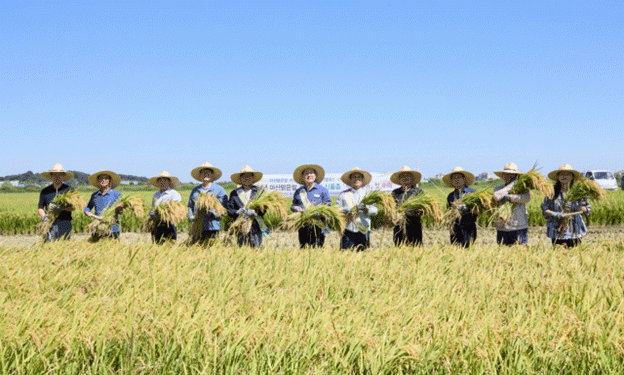Cheongju, South Korea, is making headlines with the debut harvest of its innovative “Dalmalkun Rice,” a new variety aimed at enhancing the quality and timing of Chuseok rice. The first harvest event took place on September 29, 2024, in the Sinbeop-ri fields of Dunpo-myeon, attended by Cheongju Mayor Park Kyung-ki and over 50 participating farmers.
The New Dalmalkun Rice
Dalmalkun Rice is set to become the key ingredient for the “Cheongju Clear Rice” brand, specifically developed for Chuseok, Korea’s autumn harvest festival. This new variety was bred to address the shortcomings of the previous “Cheong Ah Rice,” which faced issues with delayed heading and inconsistent quality when Chuseok came early in the year.
Since 2004, Cheongju has been working on a variety differentiation project to replace Cheong Ah Rice with Dalmalkun Rice. The project has involved the establishment of test cultivation areas covering 51.5 hectares in the Yeongin and Dunpo regions. Dalmalkun Rice is characterized by its earlier heading period, which ensures stable quality and timely harvest even for early Chuseok dates.
Advantages of Dalmalkun Rice
Dalmalkun Rice offers several benefits over its predecessor:
- Early Heading: The variety heads earlier than Cheong Ah Rice, making it suitable for the early Chuseok season.
- Stable Quality: It maintains consistent quality despite varying weather conditions.
- Low Protein Content: Despite being an early maturing variety, it has lower protein content, which contributes to a desirable taste and texture.
Future Outlook
Cheongju’s Mayor Park Kyung-ki expressed optimism about the Dalmalkun Rice harvest, noting that despite challenges such as intense heat and heavy rainfall, a bumper crop is anticipated. The city remains committed to further developing and stabilizing this new variety to strengthen the Cheongju Clear Rice brand and ensure its successful adoption.
The introduction of Dalmalkun Rice represents a significant advancement in Cheongju’s rice cultivation efforts, promising to address the timing and quality issues associated with Chuseok rice. As the city continues to support the development and expansion of this new variety, it is poised to enhance both local agricultural practices and the traditional harvest season.
Error




